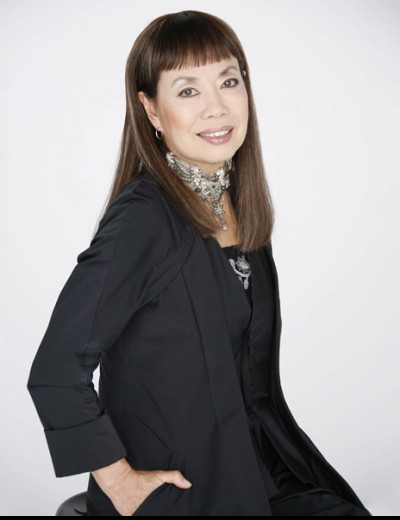
Hiroko Koshino
About
Hiroko Koshino was born in 1938 in Osaka, Japan. Her father was a tailor. She is the eldest of three Koshino sisters who have all become designers, Junko (born 1941) and Michiko (born 1950) Koshino are also now well-known.
Like many of the Japanese designers who went to Paris In the early 80's, she formed herown company and started showing separates which draw on the basic Kimono shape.
Her confidently scaled garments have earned her a wide reputation.
The Look
Junko exists in contrasts, Curves and straight lines, light and dark, round and square, man and women. She claims opposites come together to form a whole. She says: "Clothing is your second skin. As you care for your skin, you should take care of your clothes. But don't take yourself too seriously. Relax a little. There are lots of new facets you can find out about yourself." Junko looks for inspiration to French sculptor Cesar, who fashions scrapped autos into object d'art. Sleek color-blocked sports uniforms, distinctive forward-looking corporate and exposition uniforms, costumes of opera fantasy and grandiloquence, and future-aimed clothing characterize the work of Junko Koshino. While producing a fashion and lifestyle line for men and women, Koshino's notable strength derives from her strong play between the individual and the group. Ironically—at least to a conventional view of fashion as self-expression—Koshino's best works are her uniforms, collective vestments, not the elective garments of individuals. Her sports samurai are elegant and reductive, almost a kind of refashioned nudity streamlined by fashion as a shell. In outfitting sports teams, she has excelled, noting the aerodynamics of sports and applying those principles to her technology-aware garments. Koshino's sports uniforms realize Marinetti's visionary comparison toward "new beauty" in his 1909 Futurist Manifesto of the racing car and the Victory of Samothrace. But she has also sought the individual identity of futurism, a clothing inspired by the 20th-century dynamic of projecting oneself into an even more technologically intense outlook. Cocoons and spirals, concentric circles, ribbed construction, and materials from plastic to metal to cloth are typical of Koshino's exploring mind. Individual pieces are likewise utopian in vision. "Taikyoku" is the guiding philosophy of the work, signifying contrast and balance or harmony. Mystically and philosophically, the circle is most important to Koshino, who sees the form as complete and eternal, both ancient and futuristic. This symbolic approach to form animates not only Koshino's view of apparel but the outreach of her work to lifestyle and environmental design. As a designer, she has convened an Art-Futur Committee of various artists, designers, and thinkers, but she has also gone back into history to provide costumes for Mozart's Magic Flute and has shown her work in the Museum of History in Beijing. Moreover, Koshino has played a major role, in the late 1980s and 1990s, in introducing fashion ideas to China. Koshino challenges almost every preconception about fashion from the materials available for clothing to the way in which clothing serves the commonwealth and the individual. Philosophically (and she requires such thought), she is cognizant of the past but straining with futurist and utopian vision. She brings fashion into fuller and more fulfilled discourse with the other arts of design. It is the area of attainment that gives Koshino a distinctive and enduring place in the history of design. Koshino continues to design functional garments featuring geometric, sometimes asymmetrical shapes, bright and contrasting hues, varied lengths, and fabrics that range from alpaca to materials incorporating gold powder. She emphasizes the natural and places a focus on the feminine, yet she is not adverse to trying something new, such as creating clothes from metals, as she did in her winter 2000 collection.